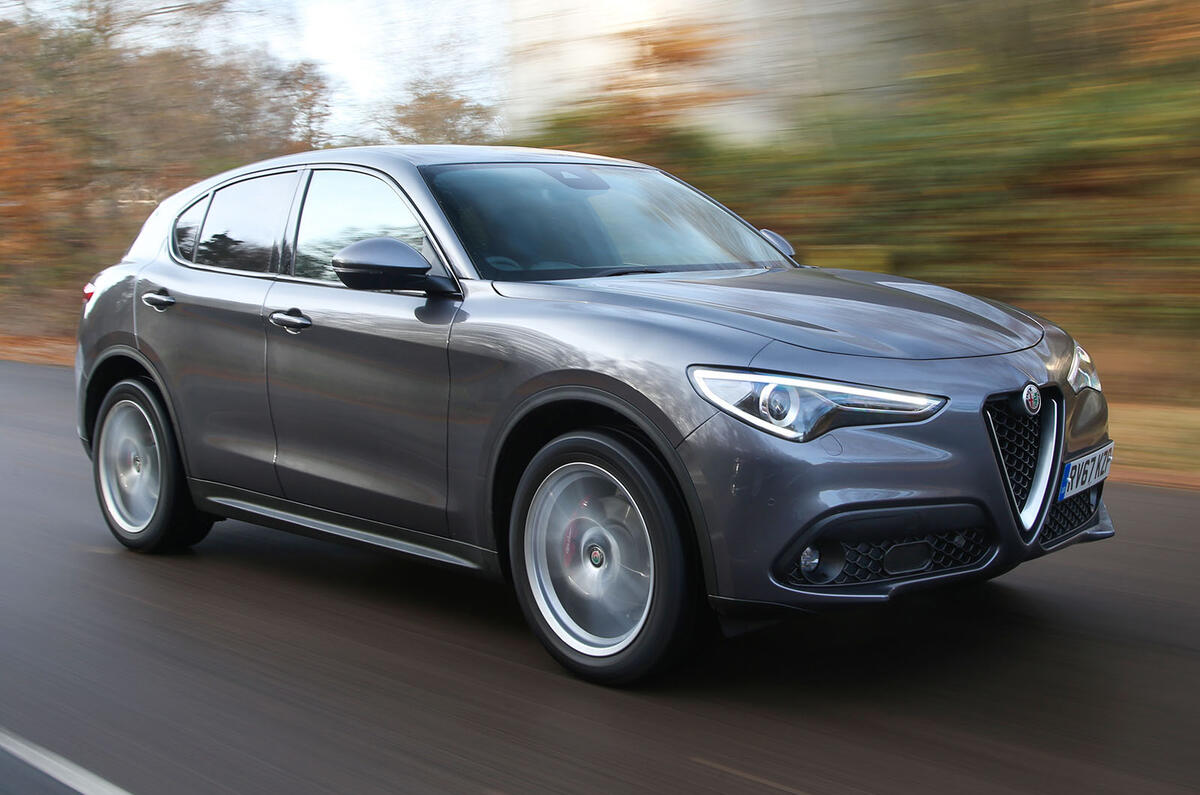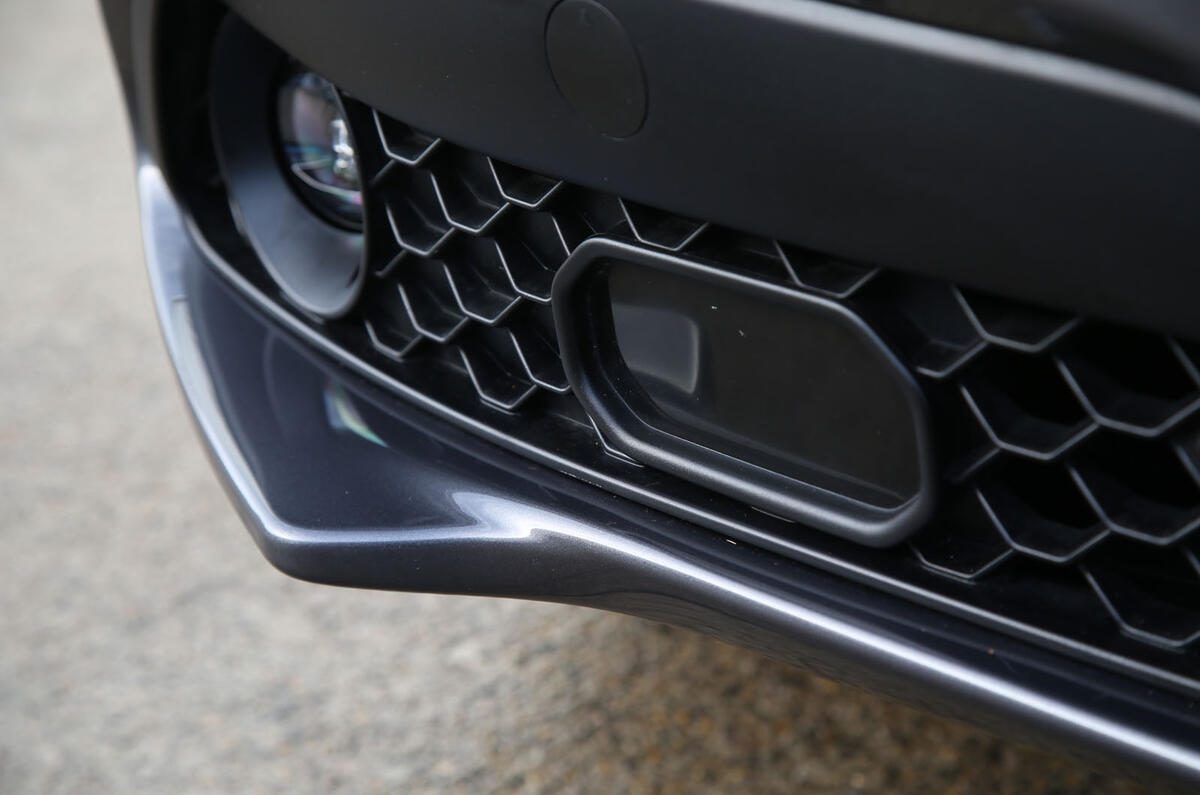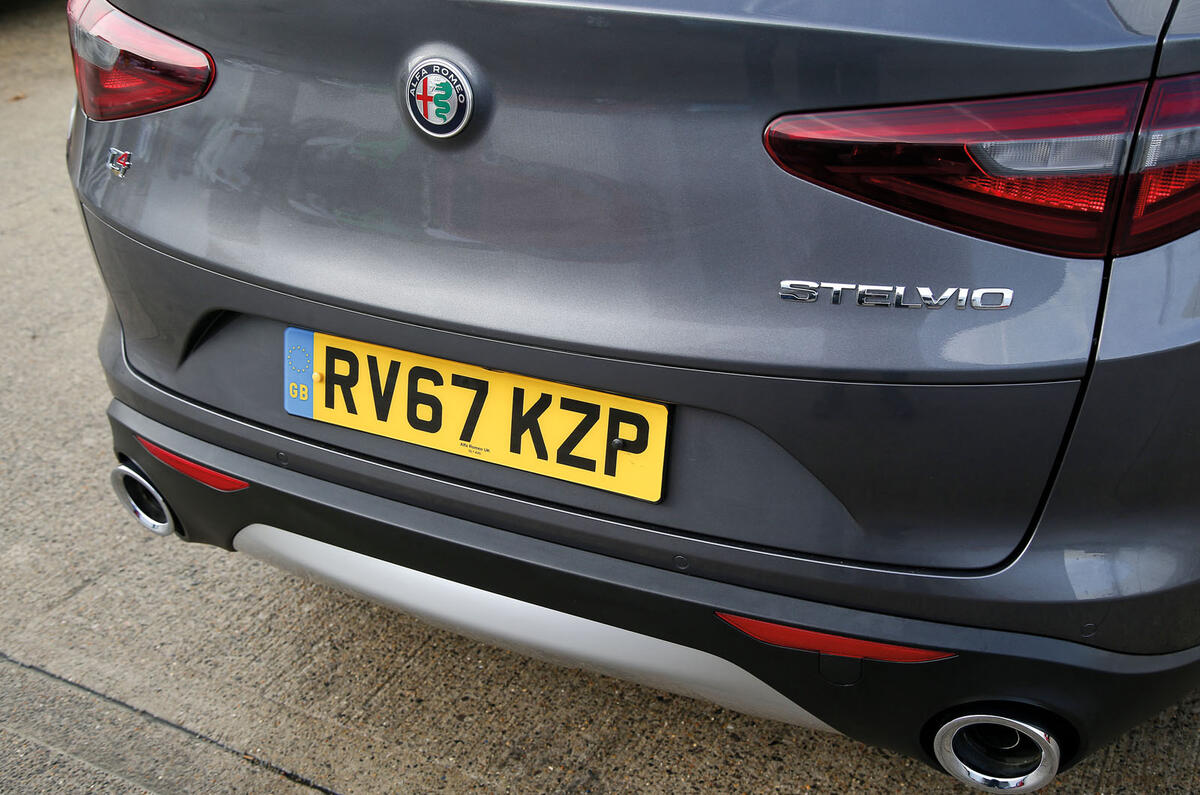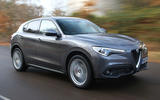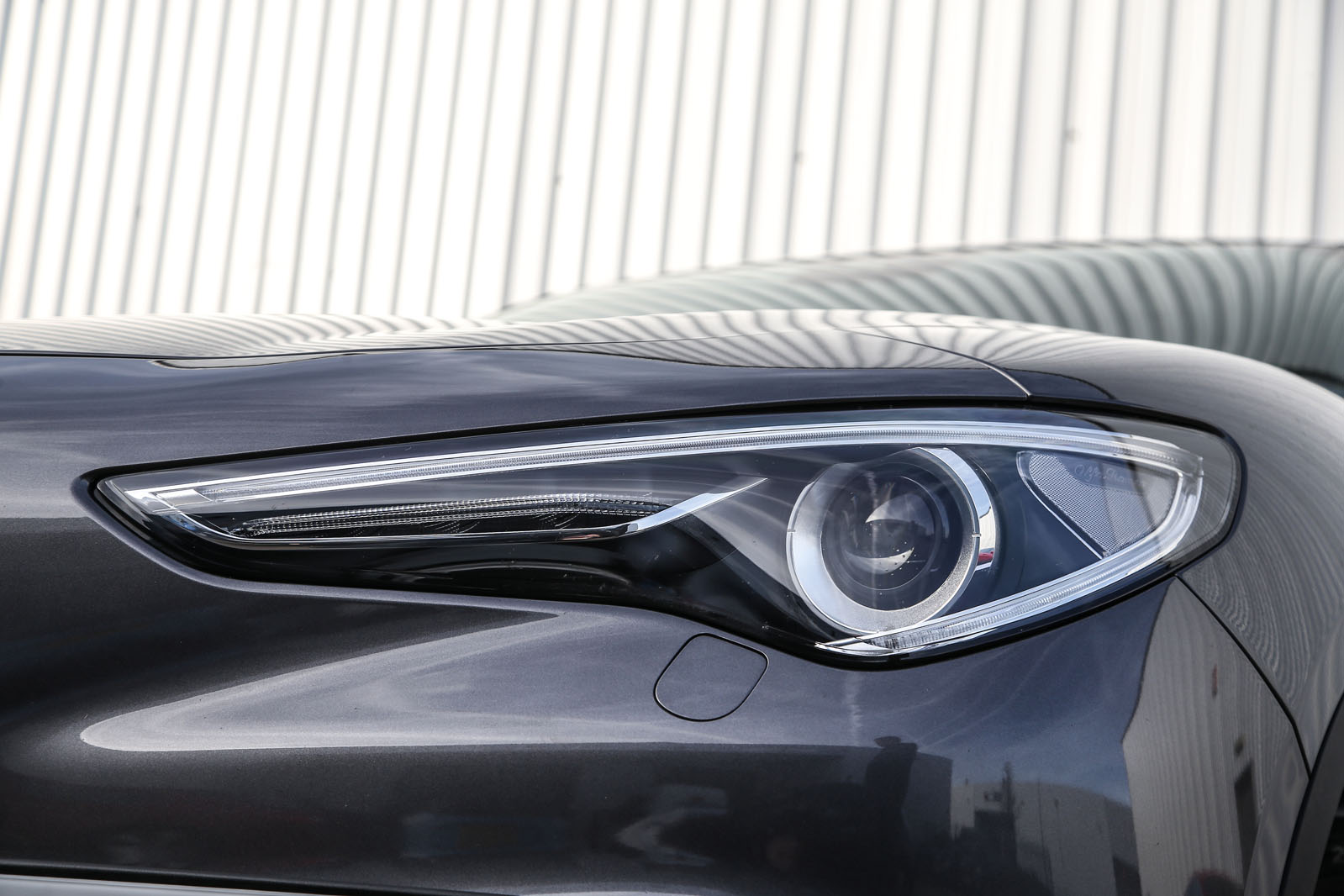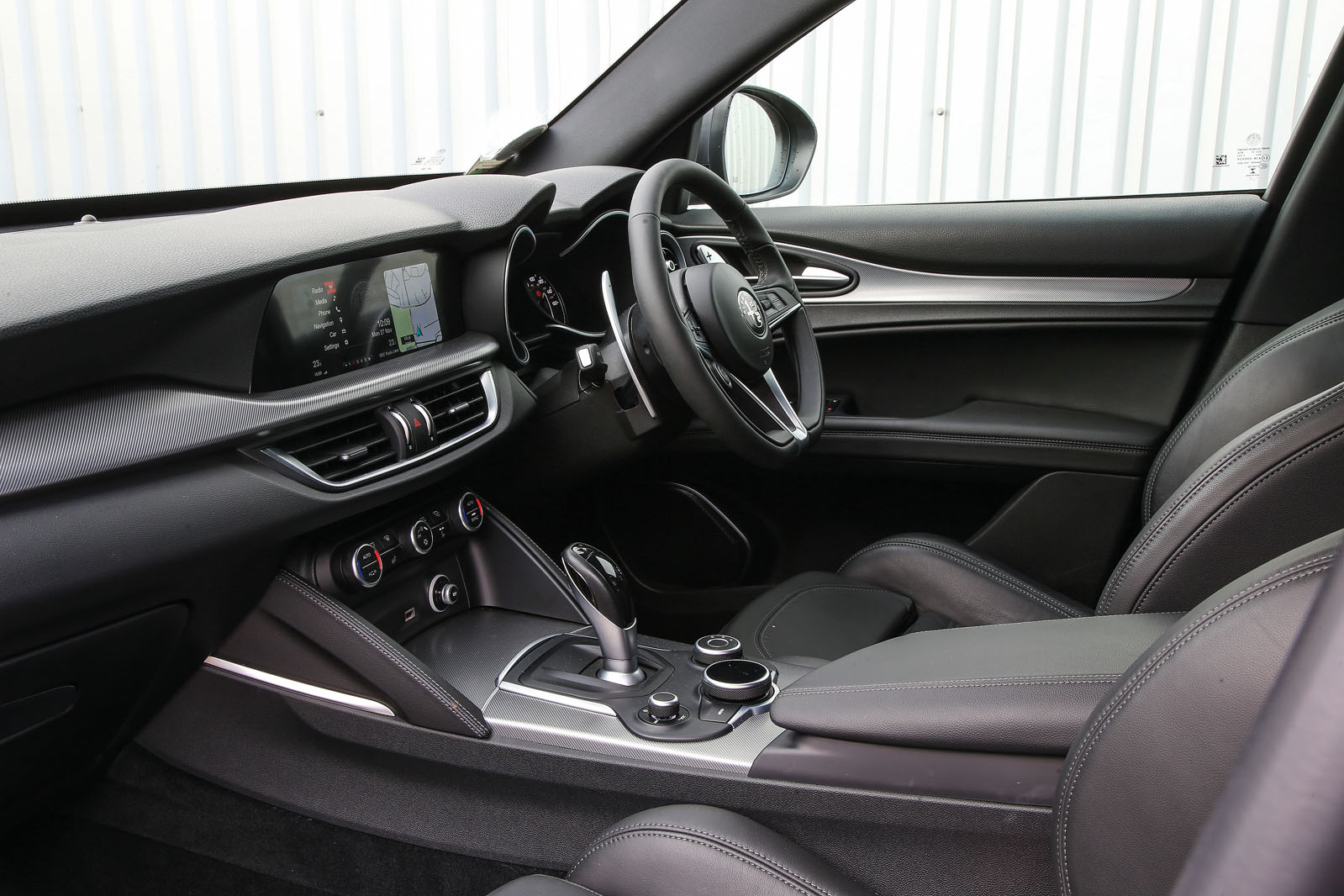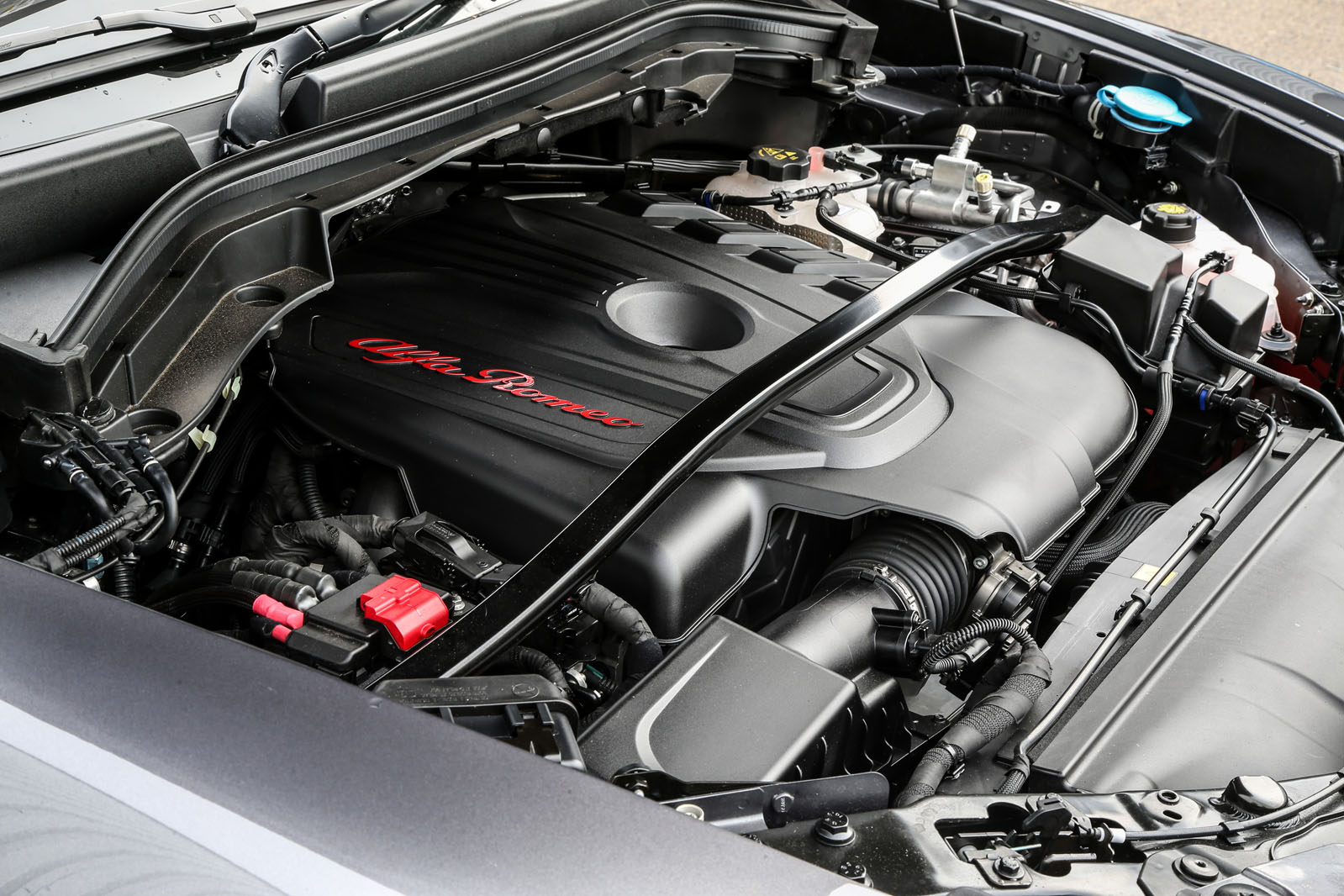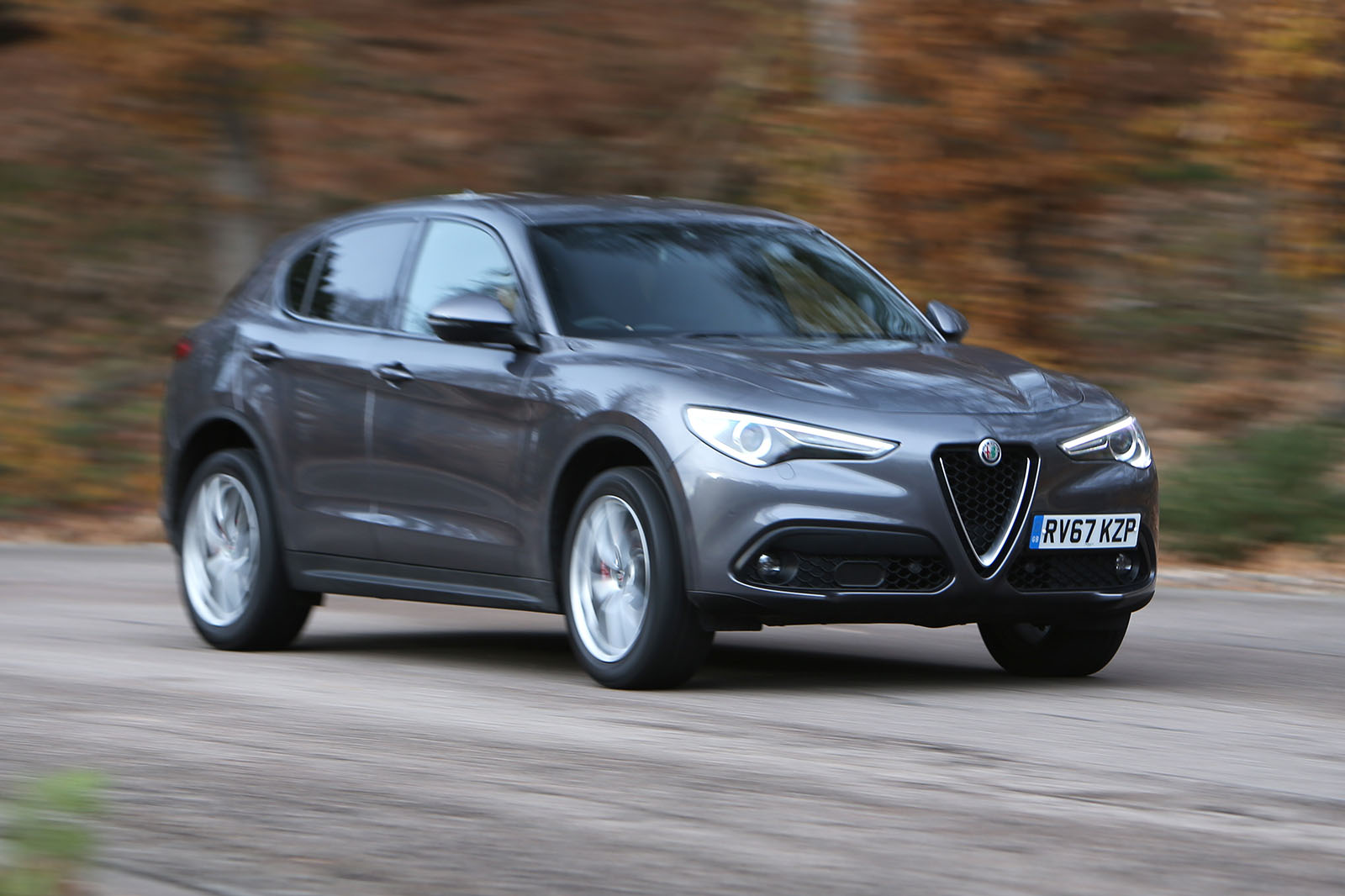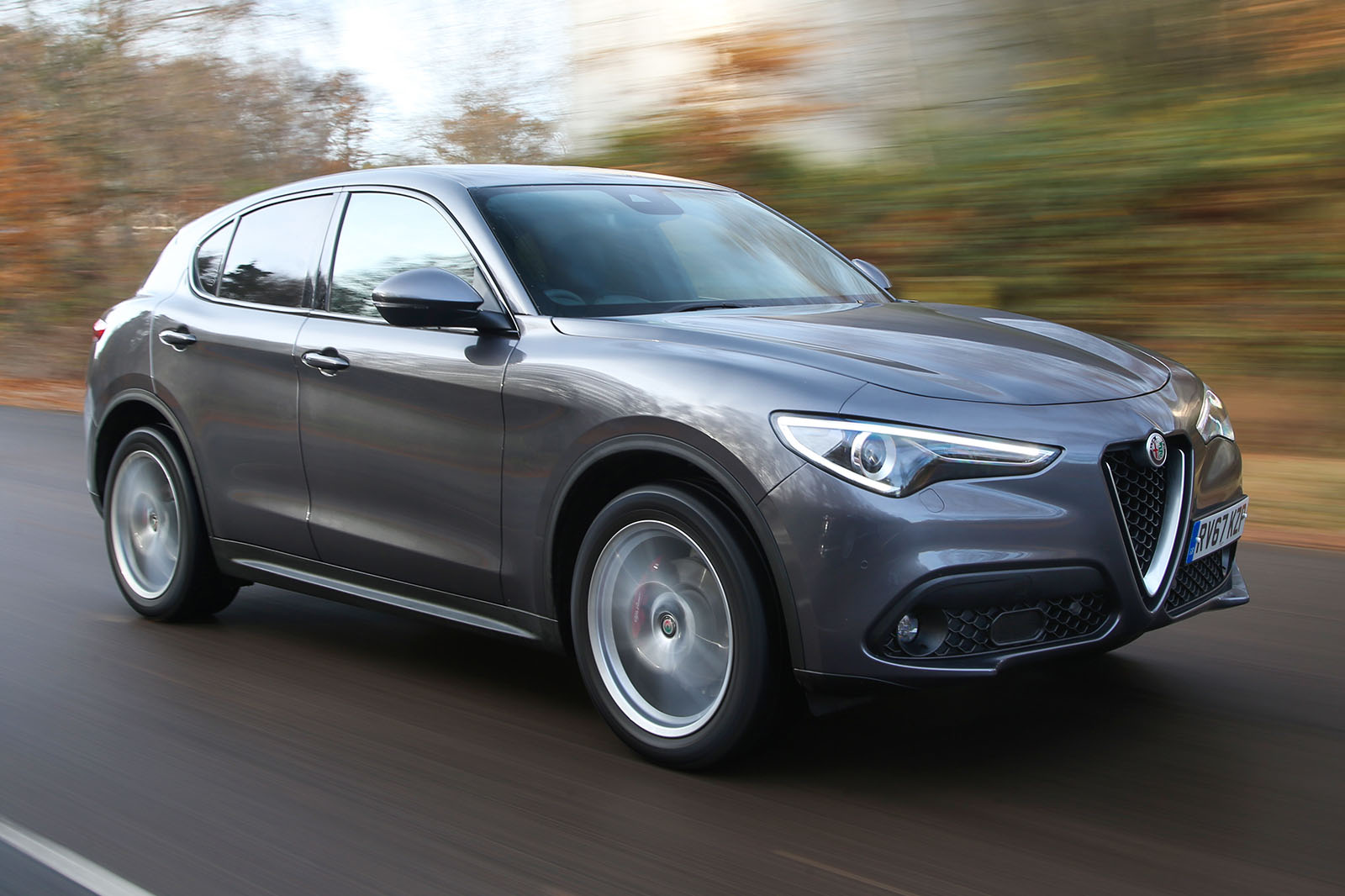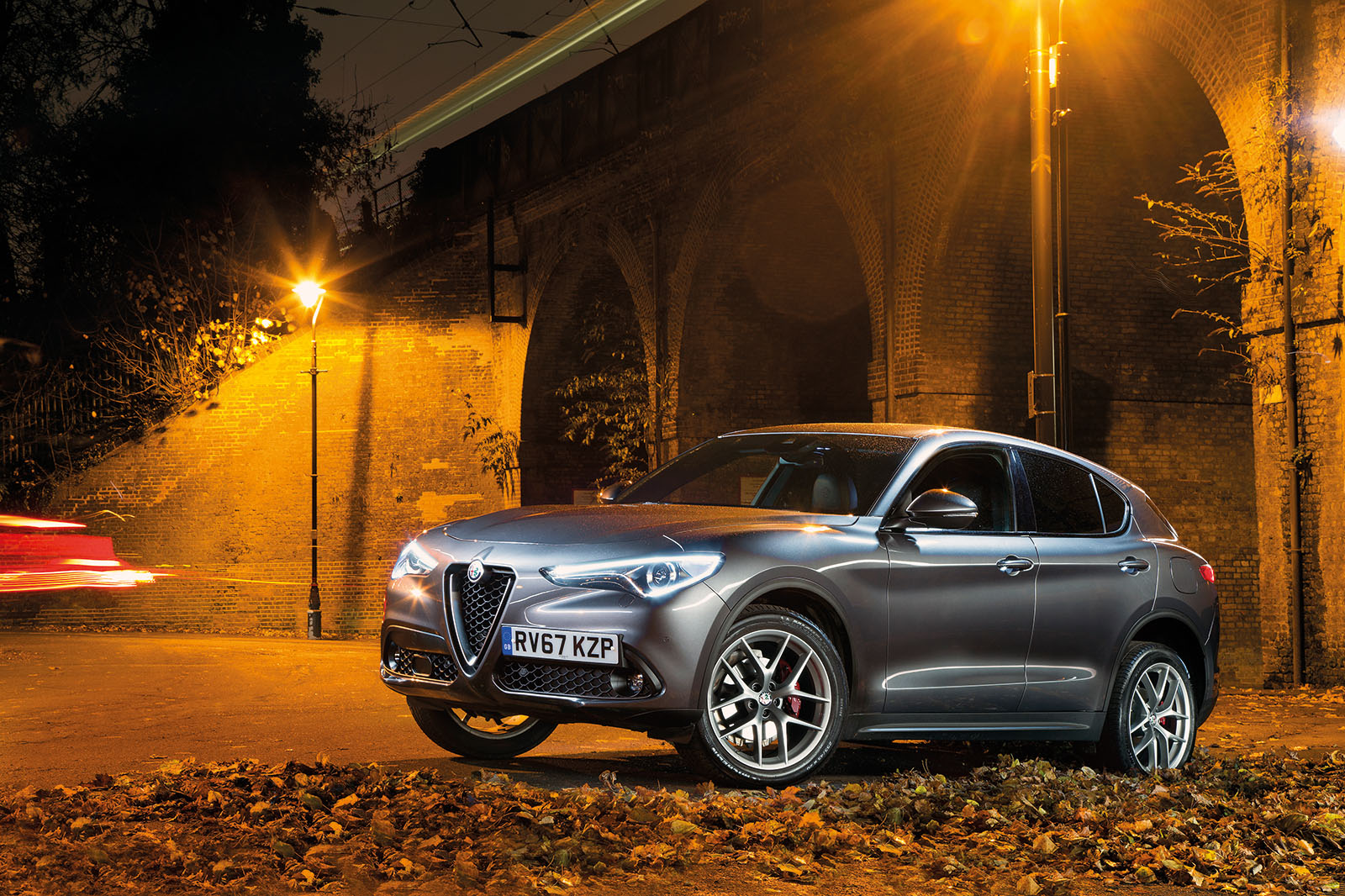The Stelvio adopts the tone set by the Alfa Romeo Giulia, which means its interior is stylish enough to impress at a glance but a disappointment in terms of materials quality and, in some instances, fit.
The hard plastic of the door cards and some play in the switchgear are particularly conspicuous, and although there’s plenty of space in the front, the ambience is a bit rudimentary for a car purporting to be a ‘luxury’ offering.
Given that our test car is a high-spec model, with leather and aluminium in abundance, Mercedes-Benz and BMW certainly don’t have much to worry about yet.
It is refreshingly uncluttered, though, with a transmission tunnel that’s home to just three dials (DNA mode selector, infotainment volume and BMW-iDrive-style rotary controller) and two buttons, along with the gear selector. You also get a thin-rimmed steering wheel with enormous, Ferrari-style paddle shifters mounted on the column and a lovely starter button that sits within the spokes.
It affords a good view of the tachometer and speedometer, which are separated by a 3.5in digital readout. Continuing the driver-centric theme are seats that are decently bolstered, low-set (a feeling augmented by the Stelvio’s high belt line) and comfortable.
Good seat adjustability means drivers of nearly all shapes and sizes should manage to find a position that affords a good view of the road ahead, although the range of telescopic steering column adjustment should be greater.
However, close your eyes and you’d swear you were sitting in a moderately focused performance saloon, which is a neat trick by Alfa.
You pay the price for the Stelvio’s undeniably elegant, sweeping roof line, though. The rear seats will feel a little cramped for taller passengers, despite positioning occupants strangely low, something that in turn limits forward visibility.
The same Alfa Romeo Connect infotainment system found in the Giulia saloon is used in the Stelvio, which means you get an 8.8in display paired with a rotary controller that’s located on the transmission tunnel.
The display itself is a slightly odd shape, being wide but short, and it feels as though it’s buried within the dashboard. The graphics aren’t as crisply rendered as those of German rivals, either, although the system does respond promptly and is easy to negotiate.
Notable by their absence are Android Auto and Apple CarPlay, which are now available even in the latest superminis.
But the good news is that navigation and European maps come courtesy of TomTom and they can operate without a GPS signal thanks to dead-reckoning technology.
Overall, functionality is good, presentation less so.


